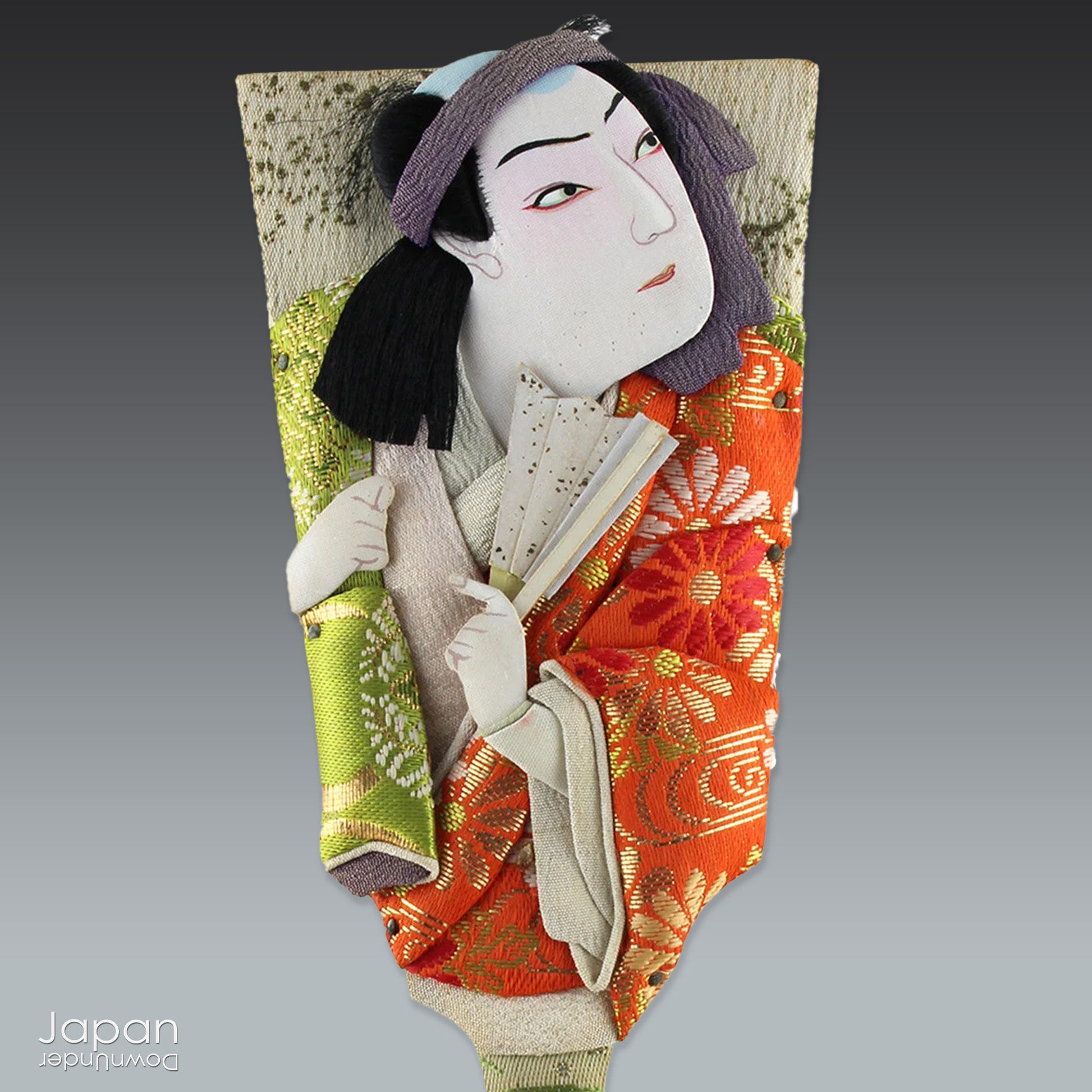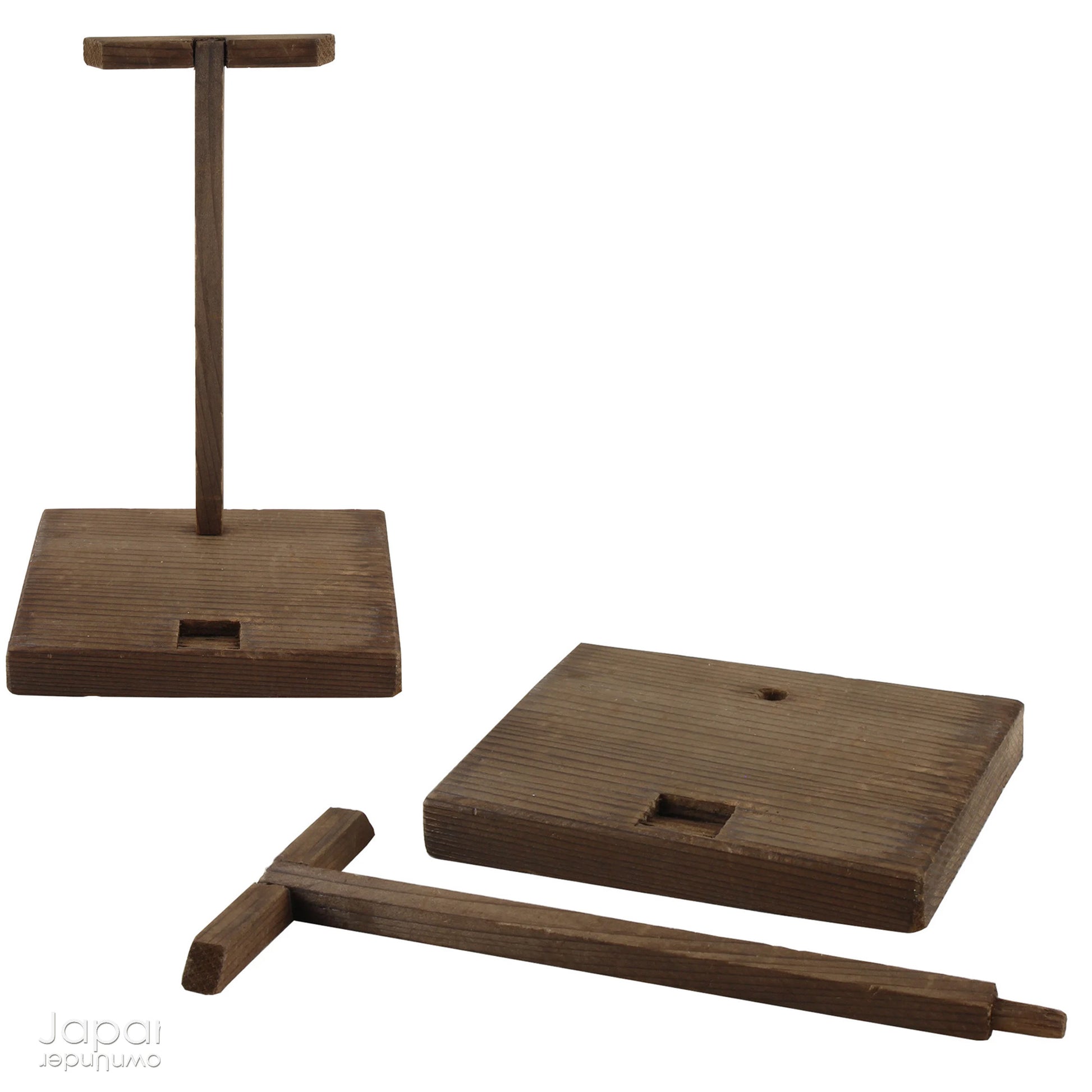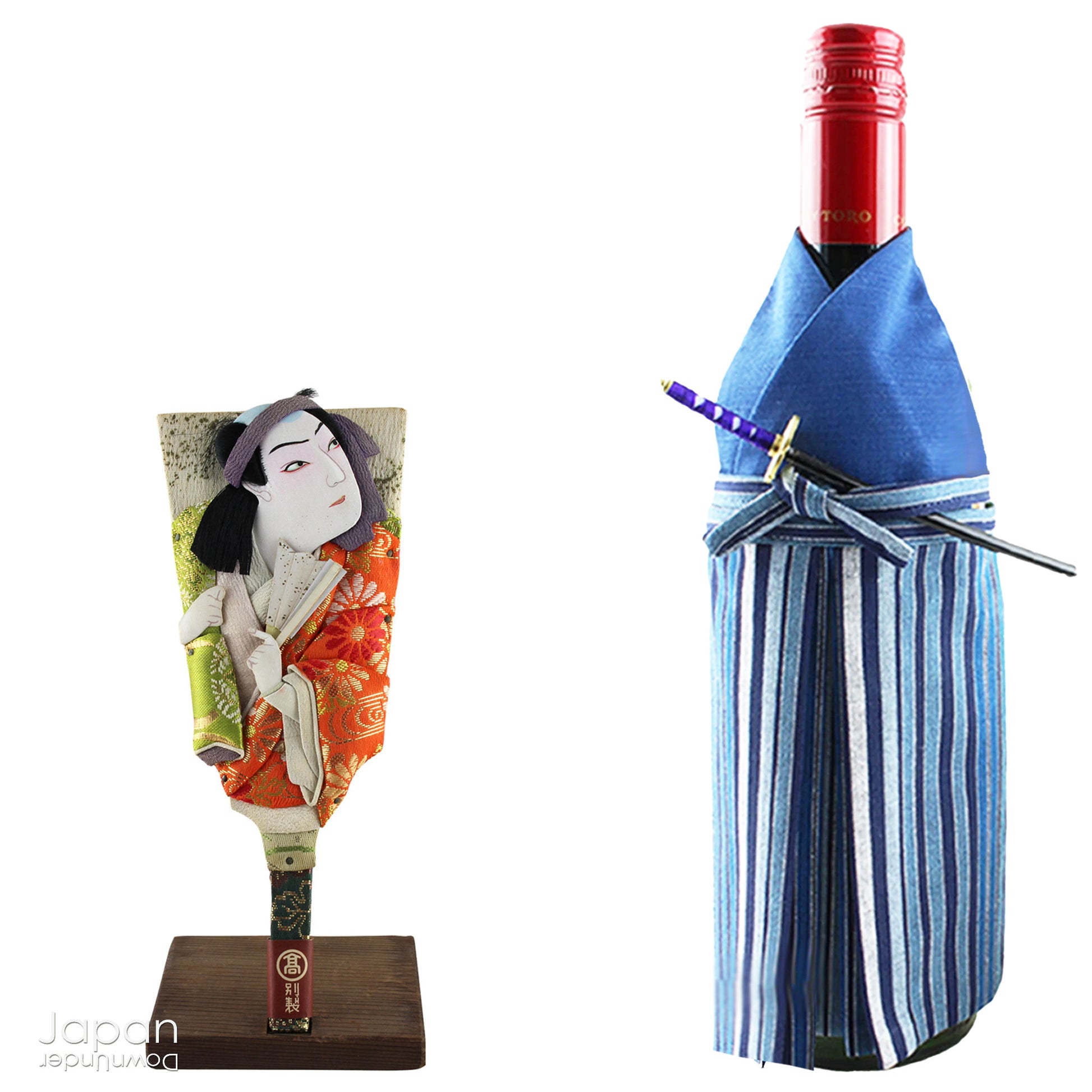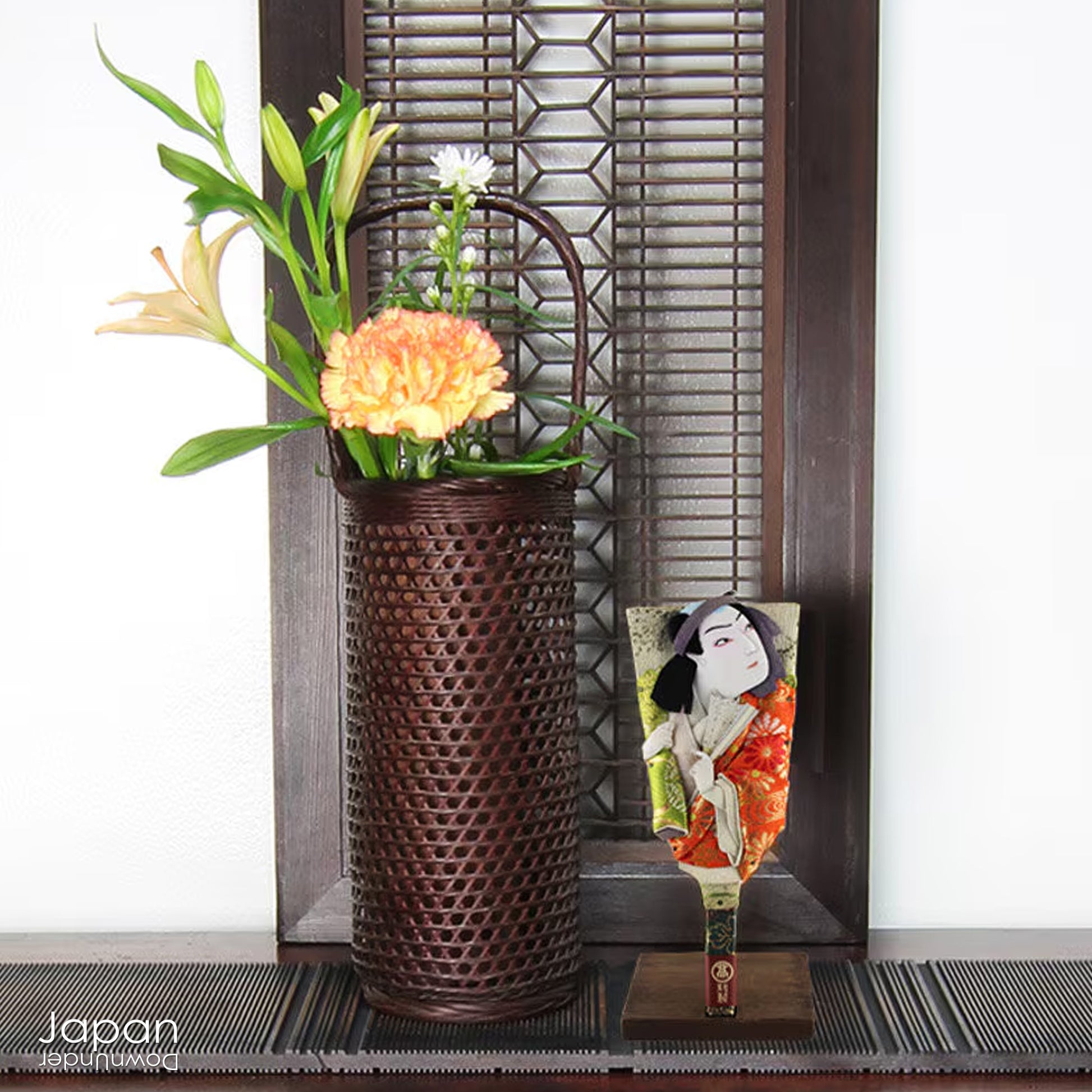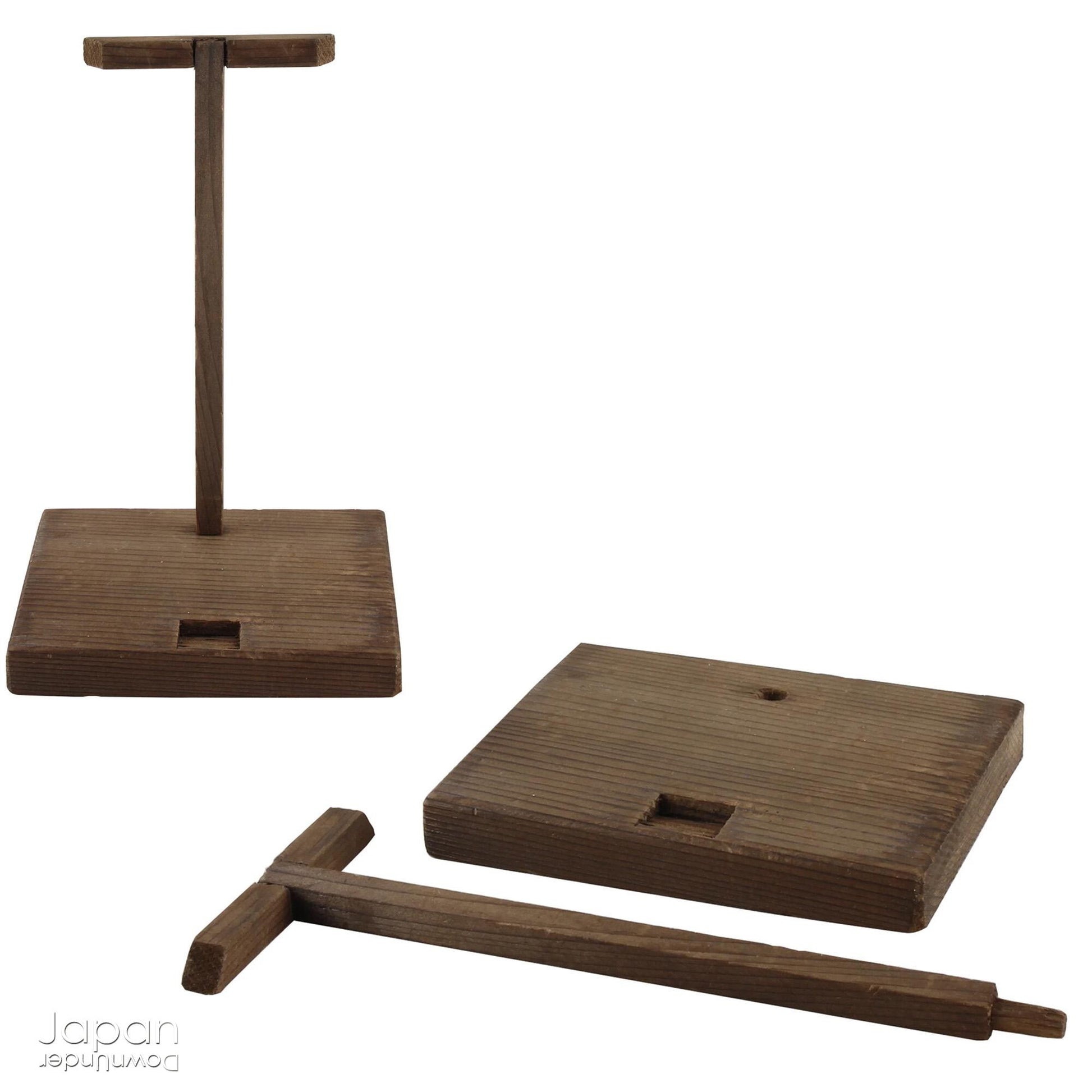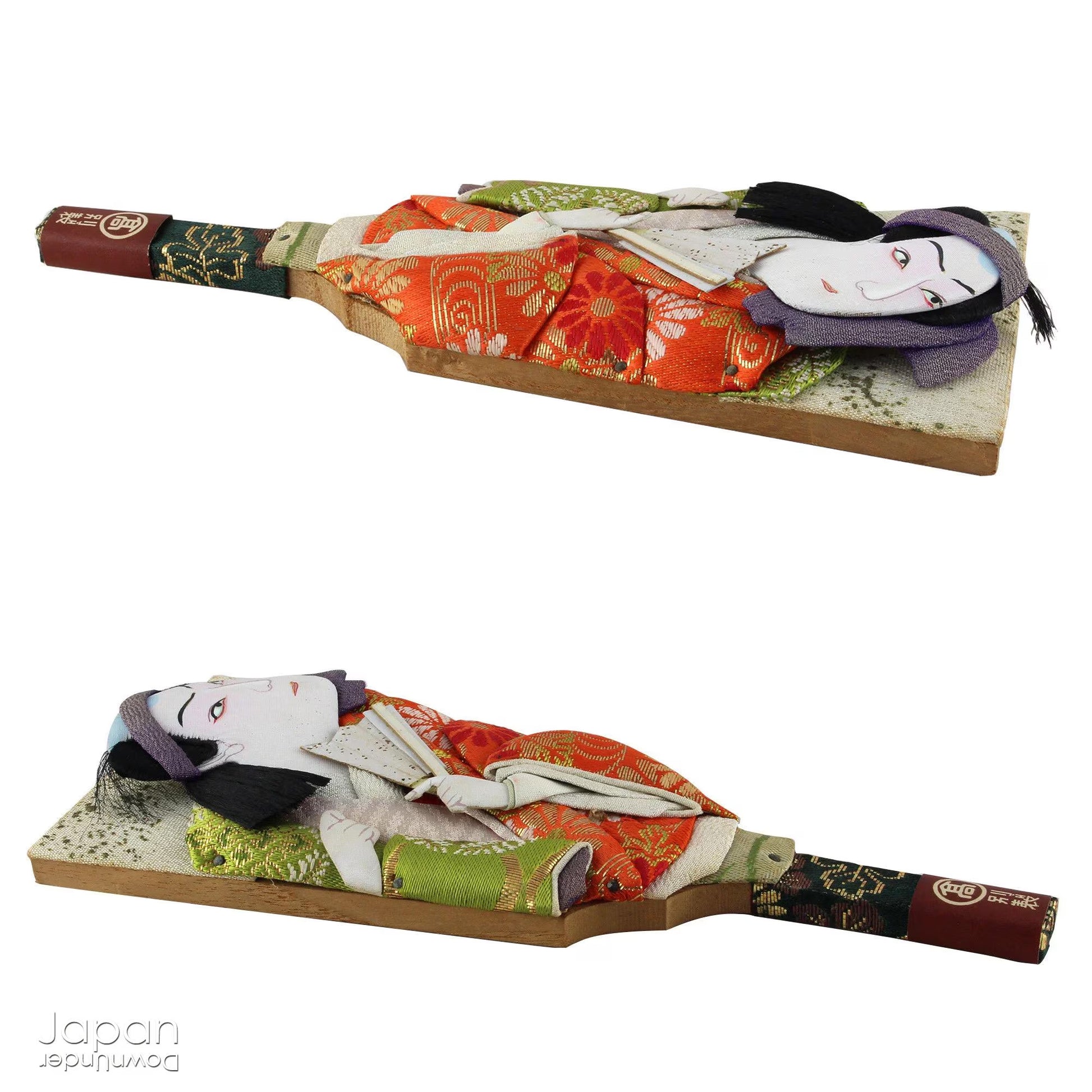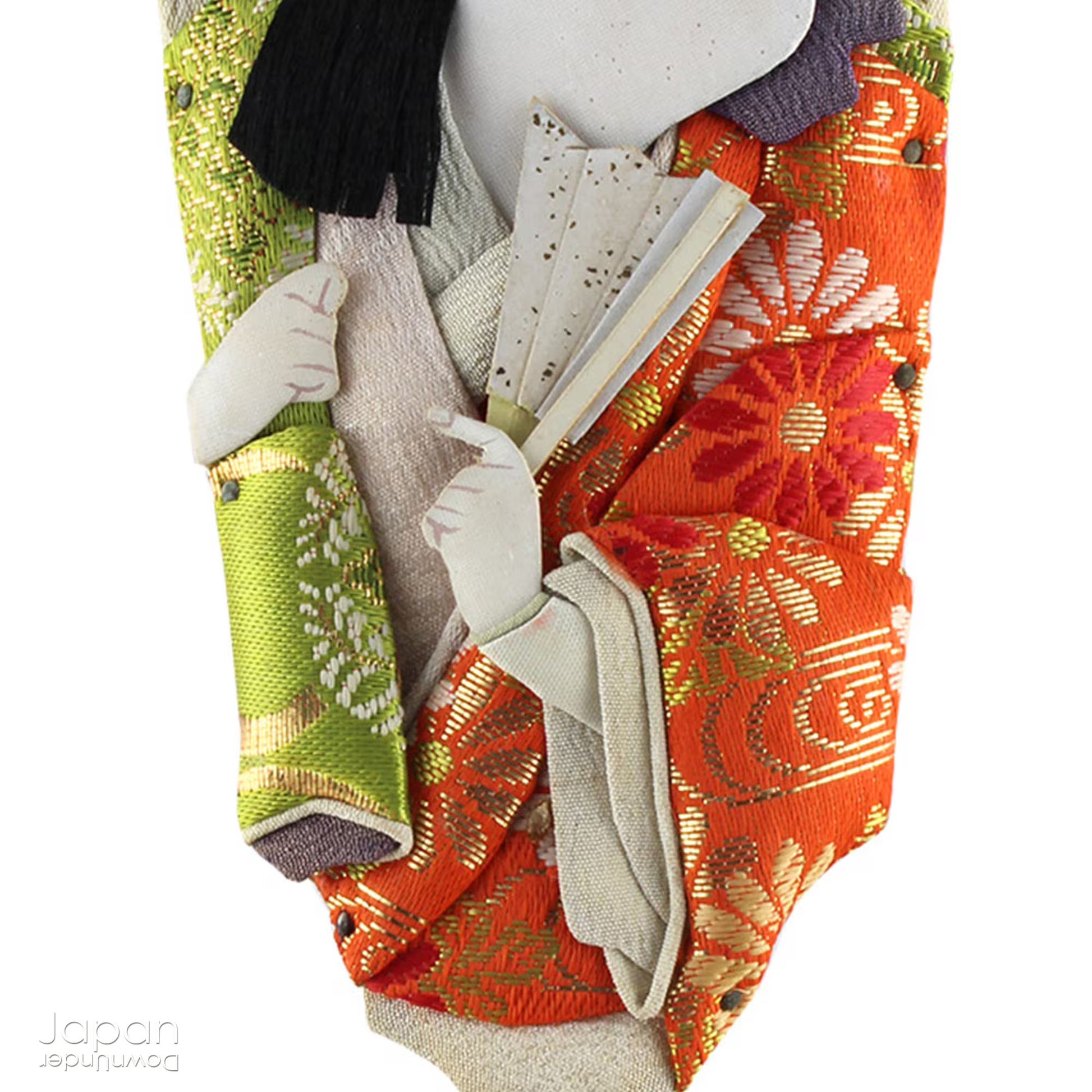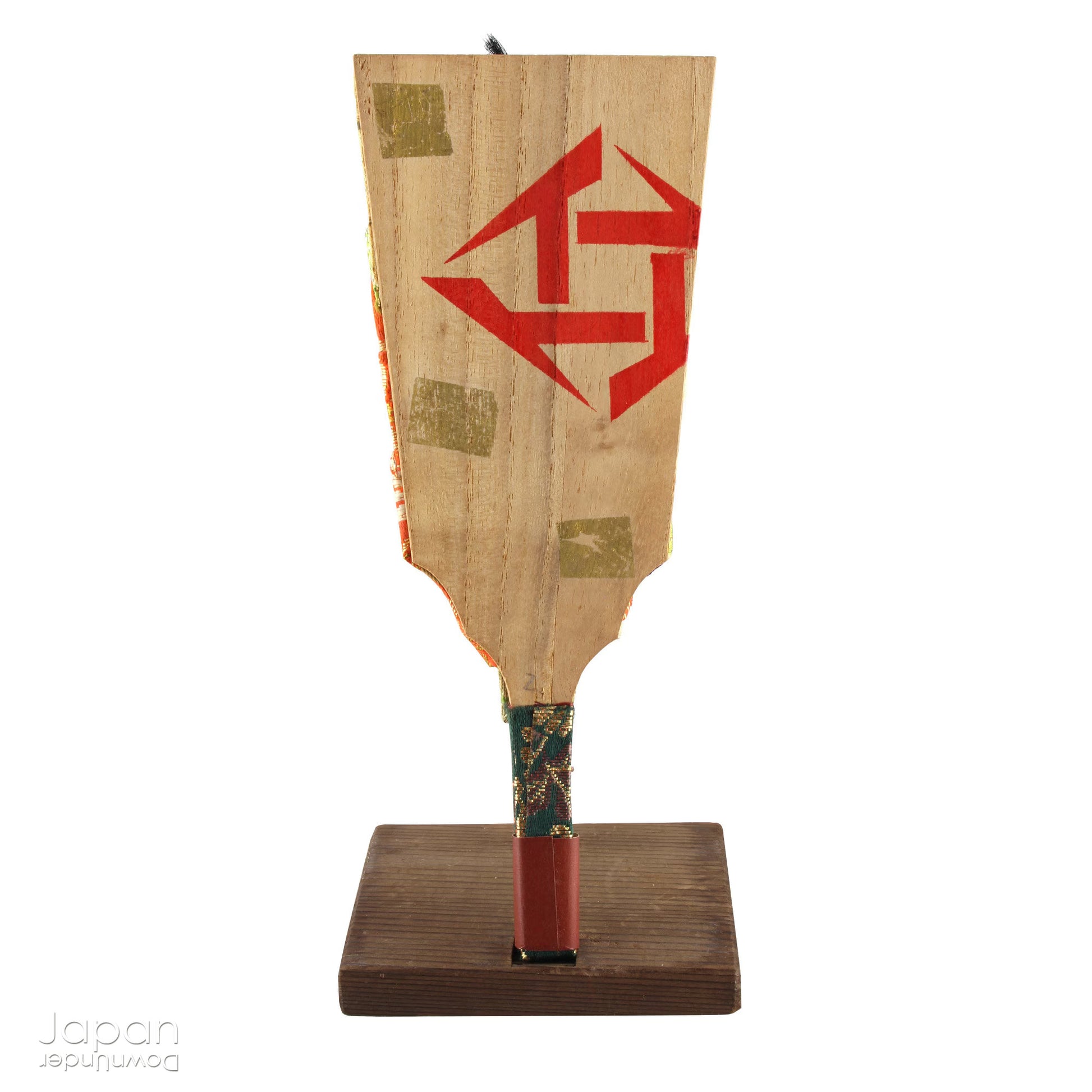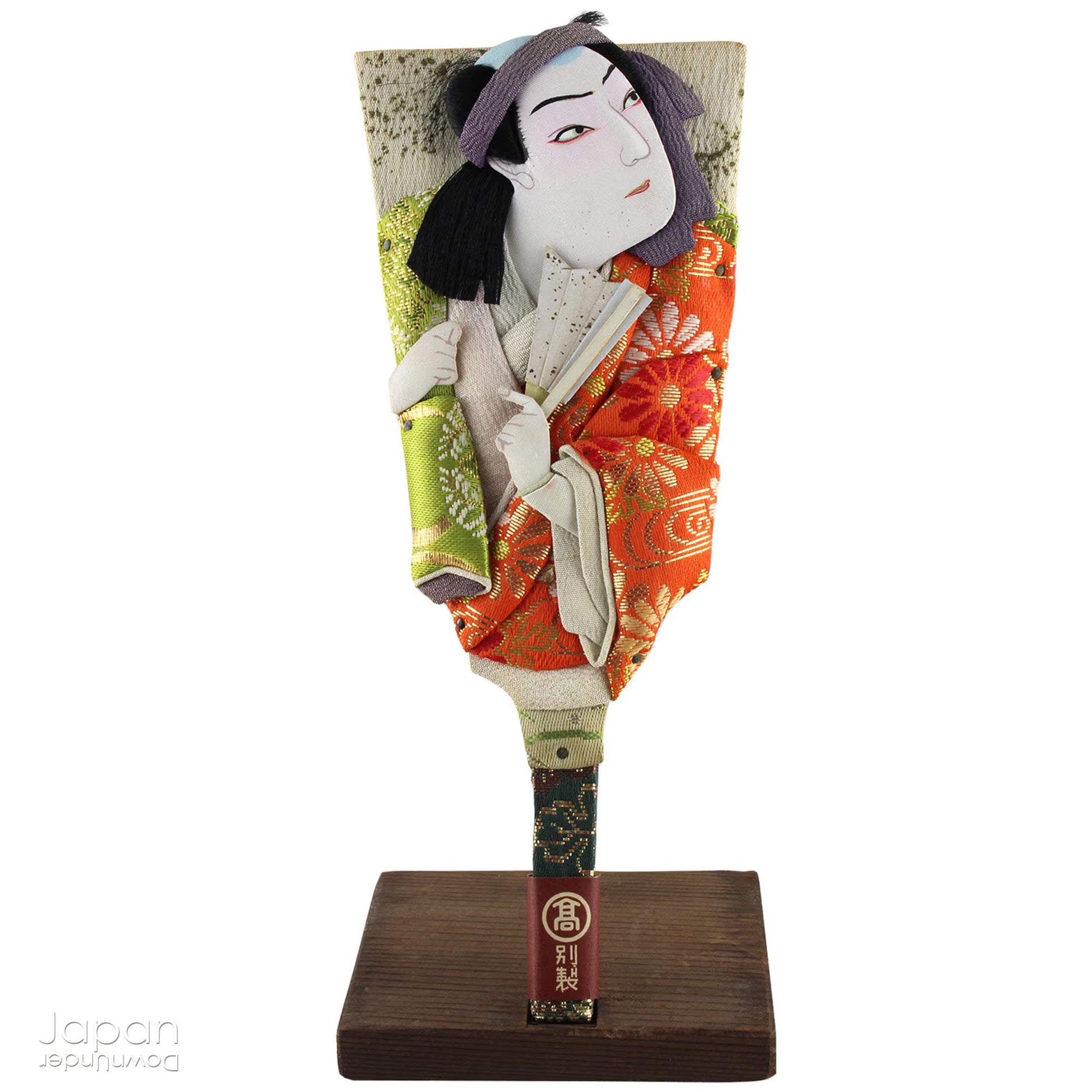JapanDownUnder
vintage japanese miniature hagoita paddle - kabuki textile art collage
vintage japanese miniature hagoita paddle - kabuki textile art collage
Couldn't load pickup availability
Love Japanese Style Like We Do
Elevate your home decor or miniature collection with this exquisite vintage Japanese miniature hagoita - a decorative paddle crafted with exceptional artistry and rich cultural tradition. This finely detailed piece showcases the meticulous craftsmanship Japan is renowned for: precise attention to detail, high-quality materials, and a refined sense of color and composition. It features the traditional textile art of oshi-e, creating a beautifully dimensional work that serves both as an elegant display piece and a symbolic charm believed to ward off evil spirits.
The hagoita has deep roots in Japanese New Year customs. Originally used in the game of hanetsuki - similar to badminton but played without a net - these paddles became symbolic protectors, their swift motion believed to dispel negative energy, much like the ceremonial gestures of a Shinto priest.
The intricate oshi-e technique, dating back to the Muromachi period (1392–1573), involves shaping silk-wrapped cardboard forms padded with silk wadding, resulting in stunning 3D textile reliefs. In centuries past, such artworks were offered at temple altars during religious ceremonies.
This particular hagoita depicts a kabuki actor in full dramatic costume, rendered in layers of brocade and silk, with skillful padding that brings the figure vividly to life. His expressive features are hand-painted on white silk, and even the reverse side of the hinoki wood paddle is beautifully adorned. A small wooden stand is included for effortless display.
In very good vintage condition, this miniature treasure appears to have never been displayed. Its compact size belies the time and skill poured into its creation - miniatures like this are often more intricate and labor-intensive than their full-sized counterparts, making them rare and highly collectible.
Whether you're a lover of Japanese art, a collector of fine miniatures, or simply someone who appreciates meaningful craftsmanship, this vintage hagoita brings timeless beauty and cultural charm to any space.
- measures around 19 cm (7.5”) long x 8 cm (3.25”) across.
- weighs 80 gm.
(listing for miniature hagoita on stand only)
SHIPPING INFORMATION
- please read our shipping notes in shipping policy.
- we use recycle packaging wherever possible and wrap for safety, rather than appearance!
ABOUT OUR VINTAGE AND ANTIQUE ITEMS
We list pieces we feel are worthy of display. There may be scratches, dents, fading and signs of wear and tear. We try to explain the condition of each item exactly, but may miss something.
Information regarding the item and it’s age is obtained from dealers and our personal research. We do our best to give you the correct information but please be aware that we cannot guarantee this information.
Please message us prior to purchase with any questions you may have about our products.
HAGOITA
Hagoita are wooden rectangular paddles used to a play a traditional Japanese game called ‘hanetsuki’ during New Year. The paddles are decorated with various images such as girls in kimono and kabuki actors. Japanese people think playing hanetsuki drives away evil spirits as the movement of hagoita is similar to the ’harau action’ a Japanese priest uses in a prayer to drive away evil.
Hagoita were introduced into Japan during the Muromachi period (1336-1573) from China. In the Edo period (1603-1868), oshie-hagoita were designed with images of elegantly made-up kabuki actors. Oshie-hagoita were made using washi or cloth, cut out in the shape of flowers and people. The cut out parts were stuffed with cotton to give them a three-dimensional appearance and pasted onto the paddle. Over time, hagoita were not only used as game equipment but also as popular collectibles.
Now hagoita are popular decorations, souvenirs and good luck charms for locals and tourists, some even featuring movie and TV stars and famous athletes.
For 350 years, the annual hagoita market has been held at the Sensō-ji temple in Tokyo. From December 17 to 19, it attracts a large number of customers and also marks the end of the old year and the beginning of the new.
OSHI-E
Oshi-e is a type of ornamental picture textile art dating back to the Muromachi period (1392-1573). It started among the elite aristocratic women in Kyoto and gradually spread throughout Japanese society. During the Edo and Meiji periods Oshi-e pictures were used as offerings at temple altars and in the late 19th century, oshi-e was exported to the West along with the other embroidery textile art.
Traditional Oshi-e was made using silk wadding to create a 3D relief design. Pieces of silk fabric, often recycled from old kimono, were used to create the desired effects. Much detail was focused on elaborate wear, head accessories, faces, and plants in the setting. Making oshi-e was a time-consuming process and in the Meiji period it was considered as a feminine accomplishment along with ikebana, embroidery and tea ceremony.
To make oshi-e pictures many small pattern pieces are cut from a thick piece of paper. Then, the thick piece of paper is bulked up with silk wadding and wrapped in silk fabric. Each padded pattern piece is covered at the back with Japanese paper. The separate parts are then glued together to make the final 3D picture.
The faces of characters featured in oshi-e pictures are created after the surface has been smoothed by the application of successive layers of gofun (crushed seashell powder). A fine-tipped brush is then used to create the facial features.
Share










